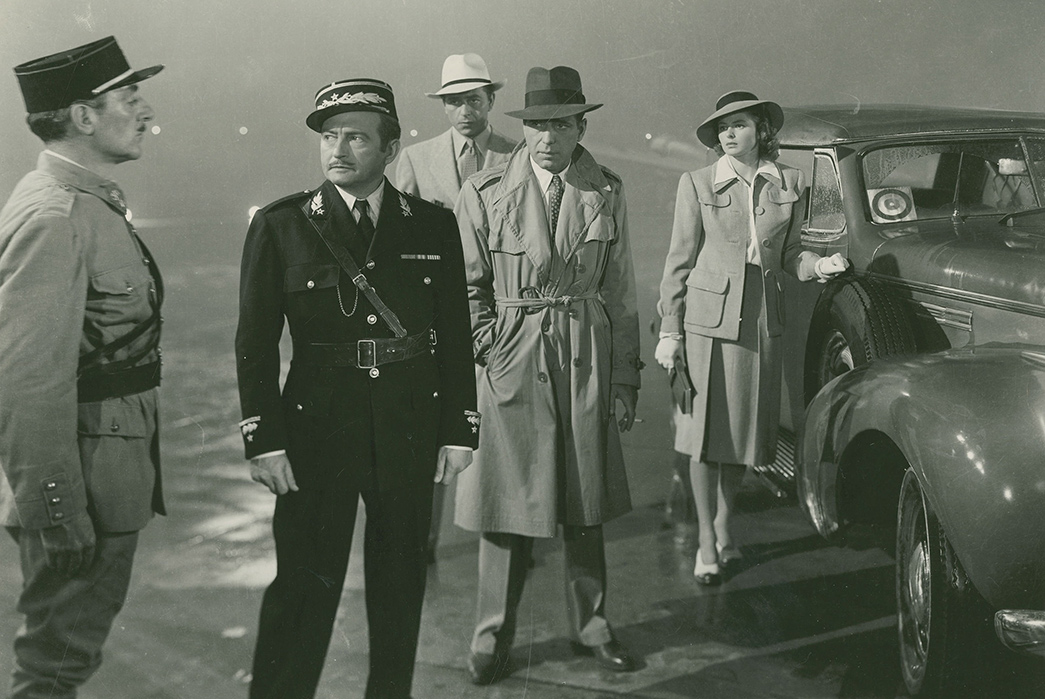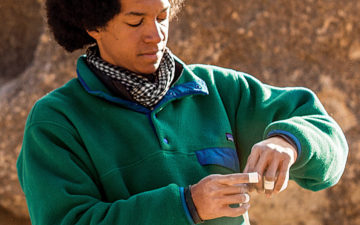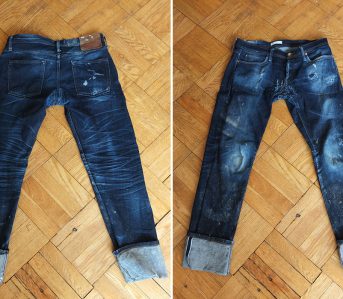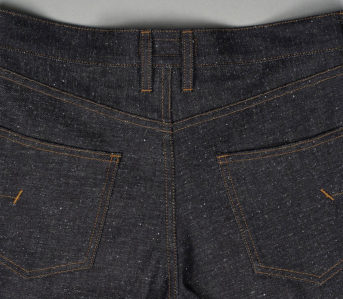Scarcely are there men’s garments that lack a military background. High-top sneakers, cardigans, even t-shirts were all developed for use by the military, whereby they gained mass appeal. The trench coat, for the most part, is one of these stories. But the research and development on it precede even the trench warfare of the First World War that gave the garment its more familiar moniker. Its origins are, in fact, even more deeply rooted in warfare and adventure than the average WWI narrative would have you believe.
In the Beginning
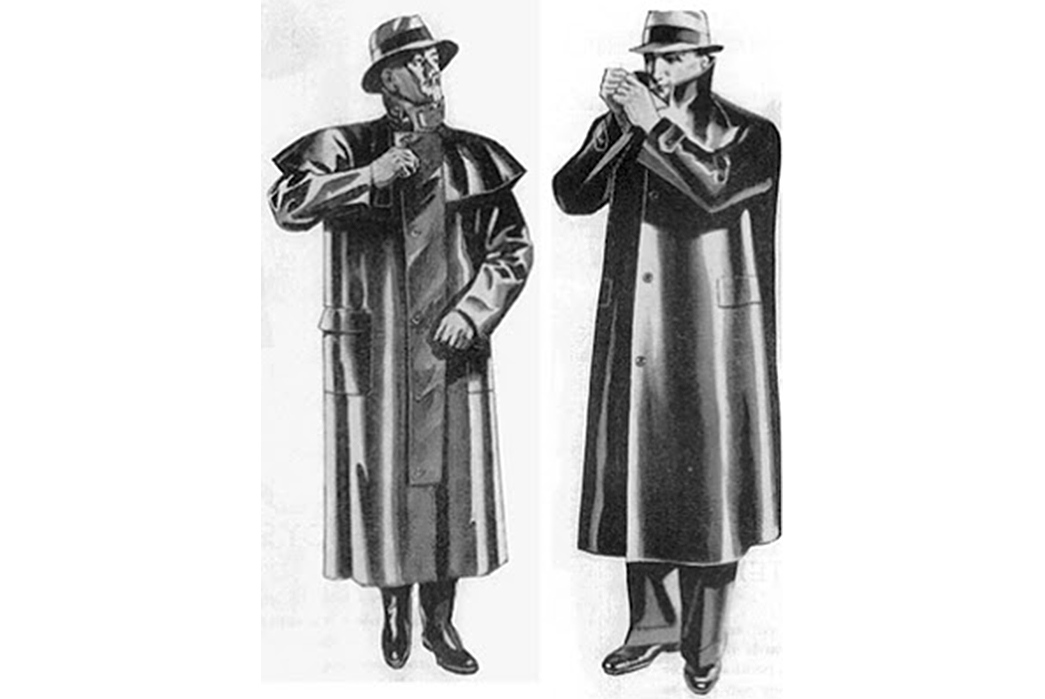
The unbearably heavy early version of the Mackintosh raincoat. Image via LARK
The early 1800s saw inventors and designers (particularly in the rainy U.K.) desperately seeking to produce a truly waterproof fabric. In 1823, a Scottish chemist named Charles Macintosh discovered that he could melt a novelty material—now called rubber—and laminate traditional textiles with it. Though rubber was used mainly for medical purposes and costly to produce, Macintosh saw promise.
His first iteration of the Mackintosh raincoat had essentially just wrapped wool in this new rubber material. Though this made for a truly impermeable raincoat, the wearer would be left miserable with their body heat both trapped by the wool and then fully sealed in by the rubber. Macintosh would later partner with Thomas Hancock, the man who had patented a now-legendary process called vulcanization, and, in 1843, the pair were able to fabricate a lighter, yet still waterproof, Mac.
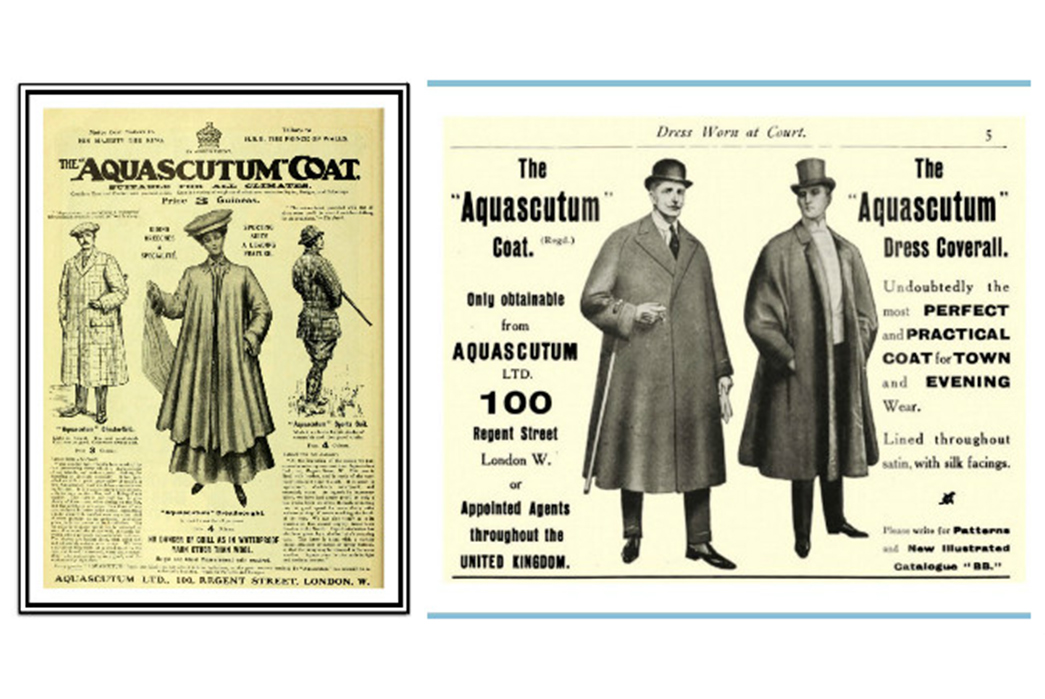
Aquascutum. Image via Oxfam GB.
There was clearly room for improvement in the world of waterproof jackets, however, and another man named John Emery took a crack at it in 1853. He invented another version of waterproof wool and combined the product with his experience as Regent’s Street tailor, which made his brand, Aquascutum, a runaway hit. What began as clothing for town and country quickly took on a military bent, and officers in the Crimean War frequently bought his hard-wearing overcoats.
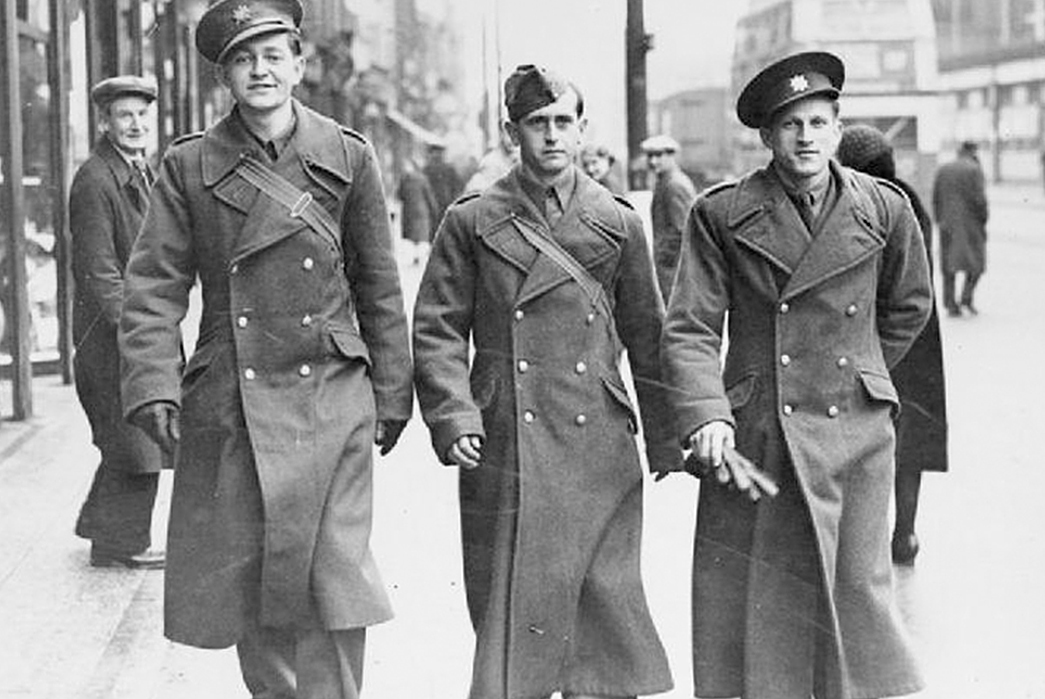
The Great Coat. The predecessor to the Trench Coat. Image via Contrado.
The long, woolen Great Coats were always a traditional part of a British soldier’s uniform, but troops were finding themselves in challenging circumstances more frequently, situations in which a long, heavy overcoat hurt, rather than helped, them.
Burberry and Gabardine
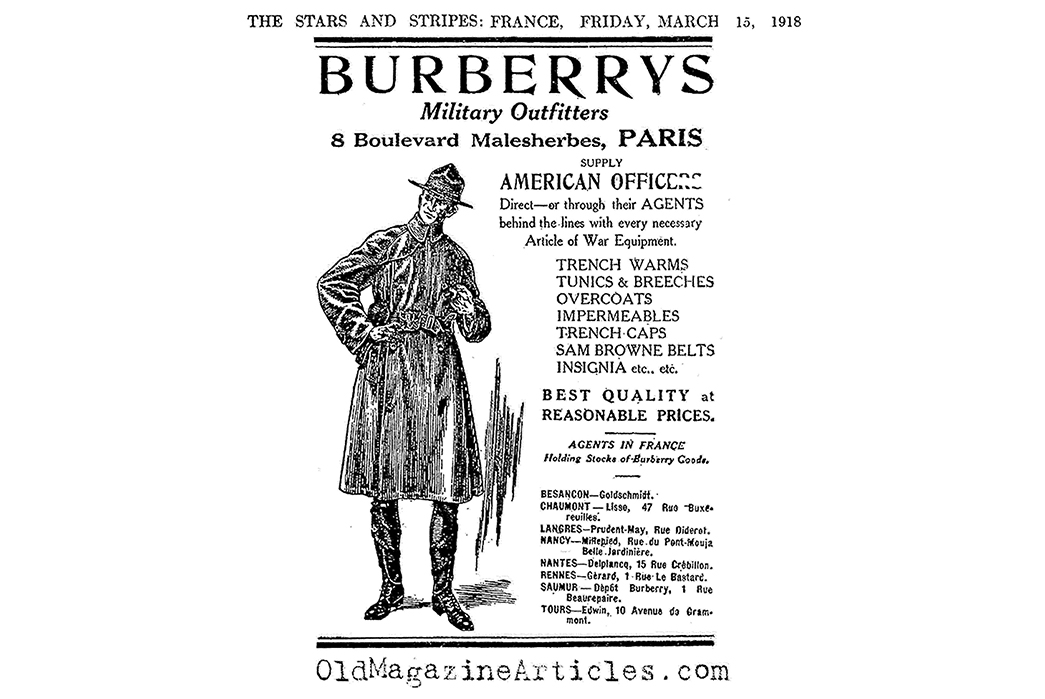
The Burberry Trench Warm. Image via Old Magazine Articles.
Burberry can safely be credited with inventing the modern trench coat, although it would still be some time before his invention won its current name. For Thomas Burberry of Basingstoke, England, the great discovery was gabardine, a tightly woven twill, made from chemically treated, long-staple cotton threads. The new fabric was waterproof, but far more breathable than any wool/rubber concoctions that other brands were using. Mackintosh coats, with their rubber component, were famously stinky and actually had to be regularly perfumed. Thankfully, gabardine was easier on the nose.
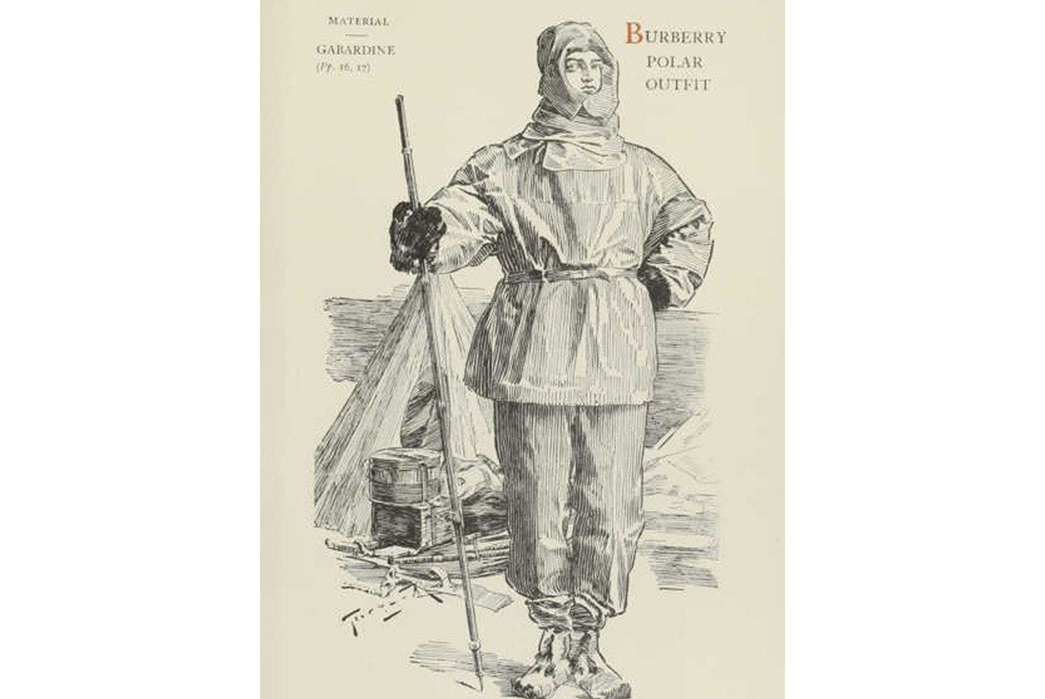
Burberry Polar attire. Image via Verve Magazine.
Burberry won public trust by outfitting two separate polar expeditions: Roald Asmundsen’s journey as the first man to reach the South Pole, and Sir Ernest Shackleton’s famed Trans-Antarctic Expedition. These missions in the early 1900s captured the public imagination and proved, without a shadow of a doubt, the utility of gabardine.
Burberry’s waterproof coat was unofficially adopted by much of the British Officer class at the turn of the century, for use during the ill-fated Boer War. Fought from 1899-1902 in what is now South Africa, the shorter, double-breasted gabardine coat was a wartime success, and halfway through the conflict, Burberry became an official outfitter of the British Army. Their first creation? The Tielocken, meaning the modern trench coat was invented 13 years before the outbreak of World War I.
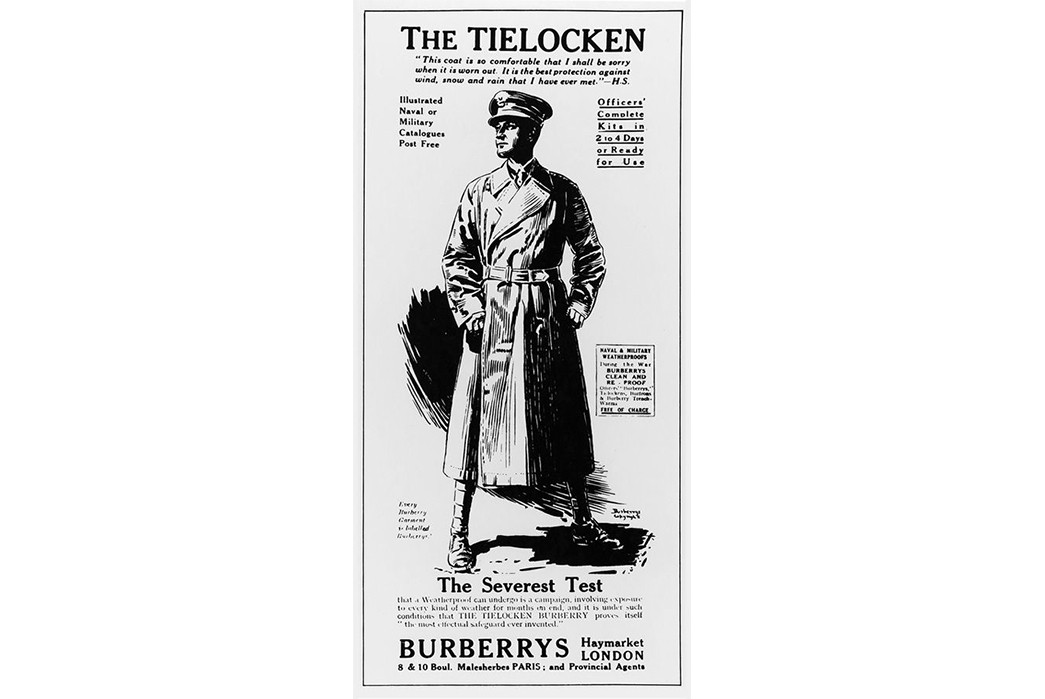
Mil-Spec Tielocken by Burberry. Image via Pinterest.
The Tielocken was made to military specifications and so-called because when the belt was tied, it was so secure that you were pretty much locked into it. And, it was here where the modern trench coat would be born. Elements of the quintessential trench can be seen in the Tielocken like the waist belt, double-breasted front, and knee length. But, as would be seen, a handful of details would be added in the Tielocken’s evolution.
By the time the Great War broke out, the Tielocken had already demonstrated its efficacy on the battlefield, and the gabardine from which it was made had also been rigorously tested as a result. Epaulets, a 10×2 button front, a gun flap at the chest, metal D-rings for attaching military tools, a storm shield and a center pleat were all added as practical additions that would not only be solidified as part of the archetypal trench coat, but also prove advantageous to WWI soldiers.
After the War
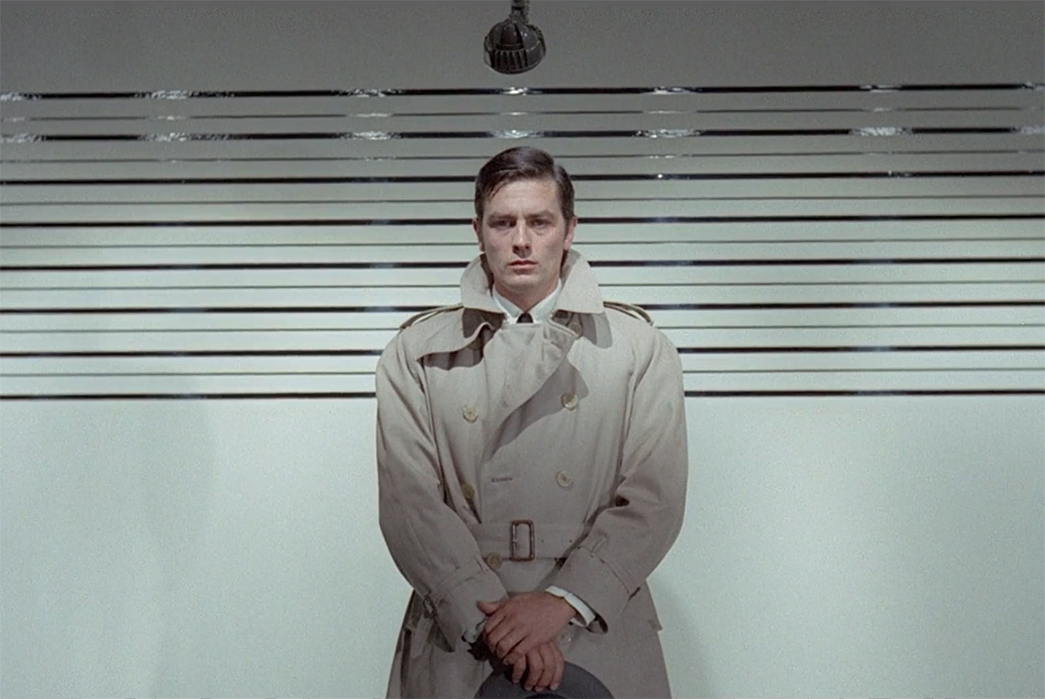
‘Le SamouraÏ’ (1967)
Though utilized in the Second World War and in civilian life, the cause for the trench coat’s next real popularity bump would be a fictitious and glamorous one—the silver screen. In film, the trench coat could handle a slouchy Humphrey Bogart gumshoe, a beautiful Audrey Hepburn out in the rain and anything in between.
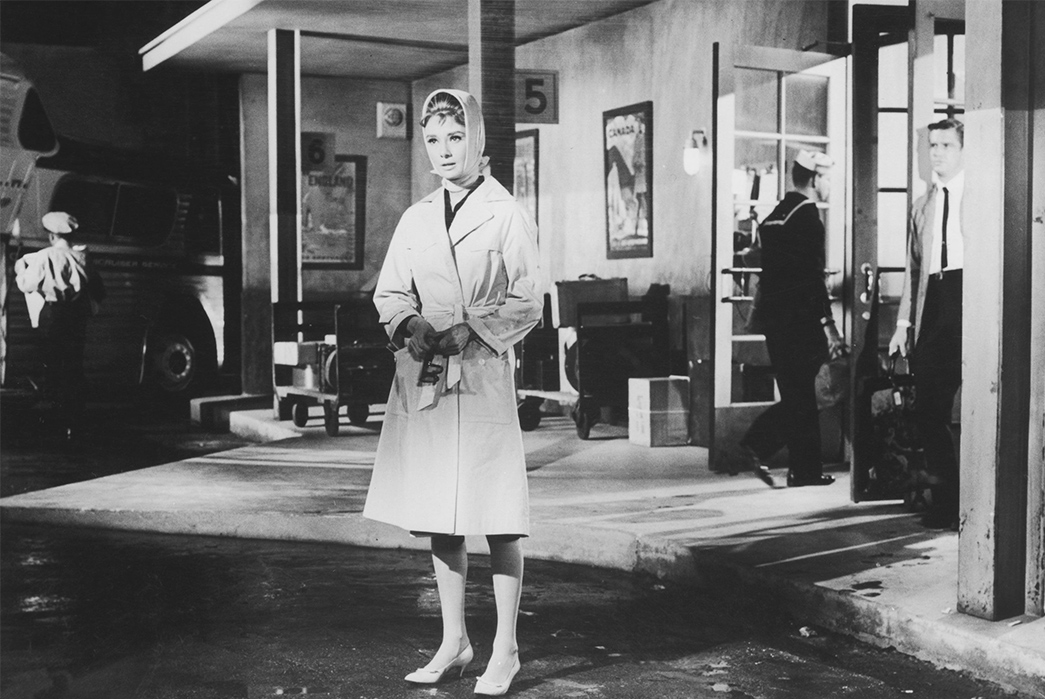
Audrey Hepburn in “Breakfast at Tiffany’s.” Image via Elle.
Even with the rich military history and decades of R & D, it could be argued that the trench coat is so evocative now because of its time in film. And though many actors in iconic roles sported this classic getup, it’s Bogart’s stocky frame in a perpetually rumpled one that consistently comes to mind.
So from country sportsman to polar explorer to upper-crust officer, the trench coat has had a long and interesting history, most of which took place before the garment even gained its modern name. And even though the thoroughly waterproof coat we love to write about hasn’t changed much in the years since its name was solidified, it will likely continue to hold up through many more fashion cycles.

